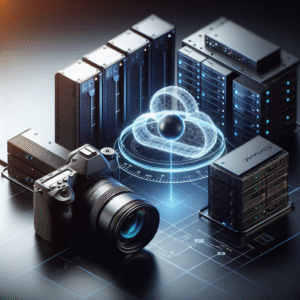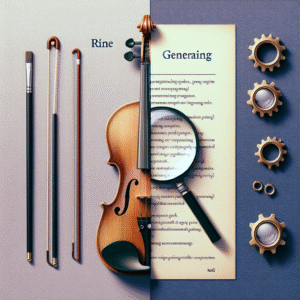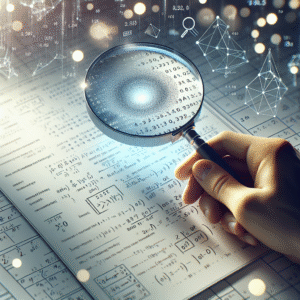Have you ever thought about how wearable technology changes our daily routines? It’s fascinating to see how these devices have seamlessly integrated into our lives, shifting the way we track our health, communicate, and even manage our time. I find myself reflecting on this evolution frequently, considering both the advantages and the potential challenges that come with it.
Understanding Wearable Technology
What is Wearable Technology?
Wearable technology refers to electronic devices that can be worn on the body, often designed to monitor and collect data about the wearer’s activities and health. This can include smartwatches, fitness trackers, smart glasses, and even smart clothing. The concept is not entirely new, but the rapid advancements in technology have made these devices more accessible and functional in recent years.
Types of Wearable Technology
There are several types of wearable technology available on the market today. Here’s a quick rundown:
| Type | Description |
|---|---|
| Smartwatches | Wrist-worn devices that provide notifications and fitness tracking features. |
| Fitness Trackers | Devices focused on monitoring physical activity, such as steps taken, calories burned, and heart rate. |
| Smart Glasses | Wearables that provide augmented reality experiences or hands-free access to information. |
| Health Monitors | Devices that track vital signs, sleep patterns, and other health metrics. |
| Smart Clothing | Fabric embedded with sensors to track movement, heart rate, and other fitness data. |
Each type serves its purpose, and I believe it’s impressive how they can cater to various interests and needs.
Health and Fitness Benefits
Monitoring Physical Activity
One of the most celebrated uses of wearable technology is its ability to monitor physical activity. As someone who’s always looking for ways to stay active, I appreciate how fitness trackers motivate me to reach my goals. These devices record metrics like steps taken, distance traveled, and calories burned, which helps me stay accountable.
Heart Rate and Sleep Tracking
Most modern wearables include heart rate monitors and sleep trackers. Understanding my heart rate can help me optimize my workouts, ensuring I stay within a healthy range. Additionally, sleep tracking has opened my eyes to the importance of quality rest. I’ve realized how crucial my sleep patterns are for my overall health and productivity.
The Role of Apps
Many wearables come with companion apps that provide in-depth insights and analytics. These apps allow me to visualize my data over time, set goals, and even share my progress with friends. I love the competitive edge that comes from comparing my stats with those of my friends. It’s a fun way to stay motivated and prioritize my well-being.
Enhanced Communication
Staying Connected
Wearable tech offers more than just health benefits; it also enhances communication. With smartwatches, I can receive notifications for calls, texts, and emails without needing to pull out my phone. This has made it easier for me to stay connected, especially when I’m out and about.
Voice Assistance
Some wearable devices include voice assistance features, allowing me to interact with my tech more effectively. I can ask for weather updates, send messages, or set reminders without typing a single word. This hands-free functionality is incredibly convenient during my busy days.
Productivity and Time Management
Managing My Schedule
Wearable technology can also help improve my productivity. I rely on my smartwatch for quick access to my calendar. I appreciate receiving reminders for appointments and deadlines without needing to check my phone constantly. This helps me stay organized and focused throughout the day.
Fitness and Workspace Integration
The integration of wearable tech in the workplace is on the rise. I’ve seen companies provide employees with fitness trackers to encourage healthy habits during work hours. It’s become common to see colleagues take stretch breaks or go for walking meetings, thanks to these initiatives. This not only boosts well-being but also fosters a more engaged and productive environment.
Potential Challenges
Data Privacy Concerns
As much as I love the benefits of wearable technology, I can’t ignore the potential privacy concerns that come with it. Wearables collect vast amounts of personal data, raising questions about how this information is used and shared. It’s essential for me to stay informed and be cautious about the privacy settings on my devices and associated apps.
Over-Reliance on Technology
There’s also the risk of becoming overly reliant on technology. While I find it helpful to track my activities and health metrics, I remind myself not to let my devices dictate my worth or happiness. It’s crucial for me to strike a balance between the benefits of technology and my own intuition when it comes to my health and lifestyle choices.
The Future of Wearable Technology
Emerging Trends
As I look ahead, I’m excited about the future of wearable technology. Innovations in design and function are constantly taking shape. For instance, the concept of health monitoring is evolving, with devices now capable of tracking additional metrics, such as glucose levels or hydration status. These advancements could revolutionize how we manage our health.
Integration with Other Technologies
Wearables are increasingly blending with other technologies, such as the Internet of Things (IoT). I foresee a future where my wearable device seamlessly interacts with smart home devices — for example, adjusting my thermostat according to my activity level or reminding me to drink water when I’ve been inactive for a while.
Conclusion
In conclusion, wearable technology has remarkably influenced our everyday lives. From assisting with health and fitness tracking to enhancing communication and productivity, these devices are becoming essential tools for many people, including myself. While I’m mindful of the potential challenges, I genuinely believe that with responsible use, wearable tech can significantly improve our quality of life.
As wearables continue to evolve, I’m excited to see how they will further integrate into our routines and aid in promoting a healthier, more connected lifestyle. It’s an exciting time to embrace technology that fosters personal growth and well-being while being aware of the implications it entails. Ultimately, finding that balance is key, and I’m eager to see where the journey will lead.






